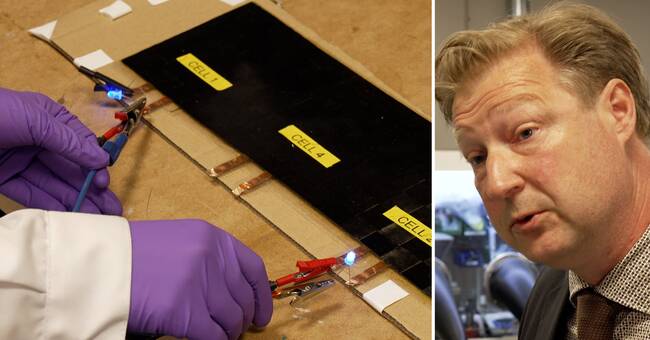Leif Asp, professor at Chalmers' Department of Industrial and Materials Science, and his colleagues have succeeded in producing such a battery material that he describes as "ten times better than the previous ones".
- We have a carbon fiber composite material that is both rigid and light, he says.
Seats and panels have energy storage capacity
In addition to being strong and sufficiently rigid, the material also has a good ability to store electrical energy.
- Now we can perhaps say that our composite is half as rigid as an aluminum beam.
In the same way, we must measure ourselves by the capacity of the battery.
Our combination has slightly worse properties compared to traditional materials, but we do two things at once and we reduce the mass of the system, says Leif Asp.
In today's electric cars, the battery basically covers the entire surface under the feet at the front and rear seats.
Where would you get a battery in the load-bearing structure?
- At first you can imagine the 12-volt system.
There is quite a lot of weight in the car's interior as well.
The chairs are spotless, as is the instrument panel.
It does not require much rigidity and it has quite good energy storage capacity.
On the market in a few years
As an example, Asp says that it would take 24 of these battery cells in the door to power the window lift, which is to be compared with the fact that 70,000 of them would be required to power the entire electric car.
- In the longer term, the batteries can become part of the body and chassis.
For me, light weight is the same as energy efficiency.
We go and buy maybe five liters of milk in a car that weighs two tons.
It's completely crazy, says Leif Asp.
He speaks like a true enthusiast.
"Imagination is our limit," he says.
- We have done other cool things too.
We have used this conductivity of the carbon fiber and the fact that it heats up when running high currents.
So we made a hood and pushed a lot of power into it.
In an extremely short time, the stiffness was reduced by 95 percent.
The hood became like a fire sail.
Imagine that you collide with someone and your hood quickly turns into a fire sail instead ...
When is this really there?
- For a laptop or a mobile that discharges in one day, I think in maybe two or three years.
For an entire car or an aircraft, it may be 20 years left, says Leif Asp

